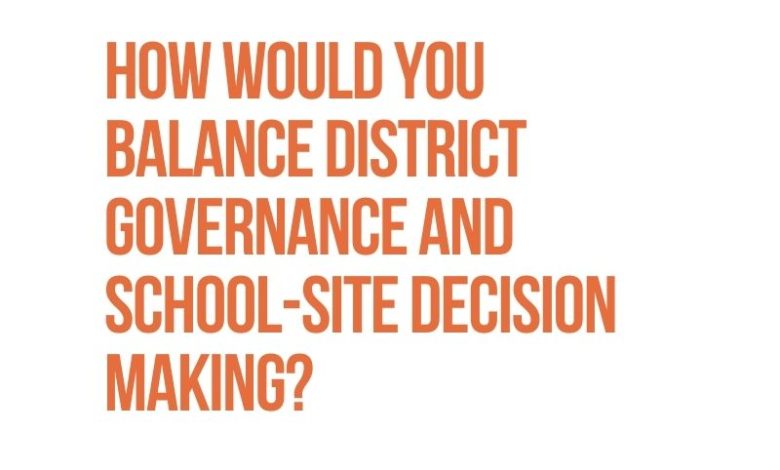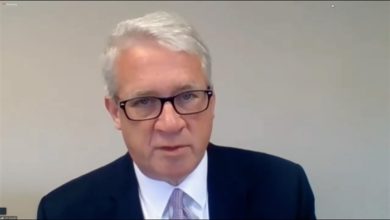How would you balance district governance and school-site decision-making?

Out-of-Township (Vote for 1)
Justin Lamb: The role of the school board is to set policies for the district. The board should let the administrators and teachers control the day-to-day operations in the schools.
Patrick MacKay: The board is responsible for district wide governance. The board is also responsible for district wide accountability. I think that we have confused accountability with micromanagement. Asking questions to better understand a particular subject matter or to unwrap the decision-making process is not micromanagement, its due diligence. I don’t believe it’s the responsibility of the school board to tell teachers how to teach. It is the responsibility of the school board to empower the district’s teachers. I don’t believe it’s the responsibility of the school board to implement the district’s strategic vision, that is the role of the superintendent. However, it is the role of the school board to evaluate and hold the superintendent accountable for the achievement of specific goals and metrics that should always be shared with the public.
In-Township (Vote for 2)
Sunny McMurry: When considering that the board is here for governance of our district at a high level view, I don’t see how a board member would be involved in decisions that are made within schools. To put this plainly, it is not the Board’s job to handle school-site decision making. We have highly-qualified teachers, staff and administrators who are entirely capable of making decisions for day to day operations. Instead it is the Board’s job to make sure the policies that govern the district are driving our district forward and not standing in the way of the excellence we have continually strived for.
Max McComb: I believe strongly it is the board’s role to provide governance. It is the job of educated and paid educational experts (teachers, administrators, staff) to do school-site decision making. This is how our system is designed to work. This is how our district has operated in the past, including the past 14 years I have been on the board. This is the model that has given our community one of the top school districts in the state. Very simply put, disagreement on this has been at the center of the philosophical disagreement on our board over the past two years.
Laura Lang: This can be a complicated topic, but for the sake of simplicity, the district sets goals and priorities to then cast vision. At the district-level, if it is done well, the board works with the superintendent to ensure that the organization tree ensures uniformity, but also creative space for instruction. This then occurs at the school-site level. Building administrators then work with the superintendent to empower educators to do what they do best: teach! The building administrators work with their educators on the day-to-day ins-and-outs. This does not mean though that district level administrators cannot interact with building-sites or educators, in fact, staying informed and connected with the day-to-day operation helps district-level decision-makers to make thoughtful, well-informed decisions. It is important that each piece of the puzzle understand their roles, and respect one another within that role.
Rebecca Richardson: These issues go hand-in-hand. School-site decision making is a part of district governance. The more crowded the classrooms, the more challenged the district will be to serve the needs of all students. The board should thoroughly vet the short-term options as well as complete scenario planning for both 5- and 10-year growth predictions. No one wants to raise property or other taxes, but if there are no other options, the board needs to explain why the decision to raise taxes is necessary.





